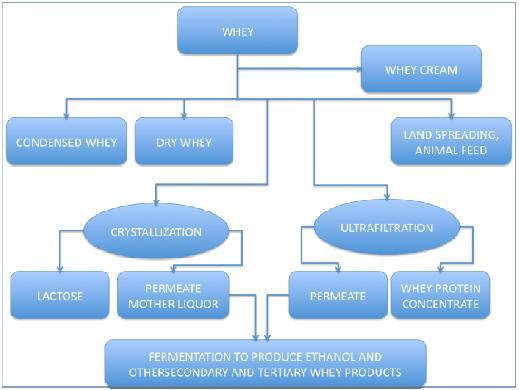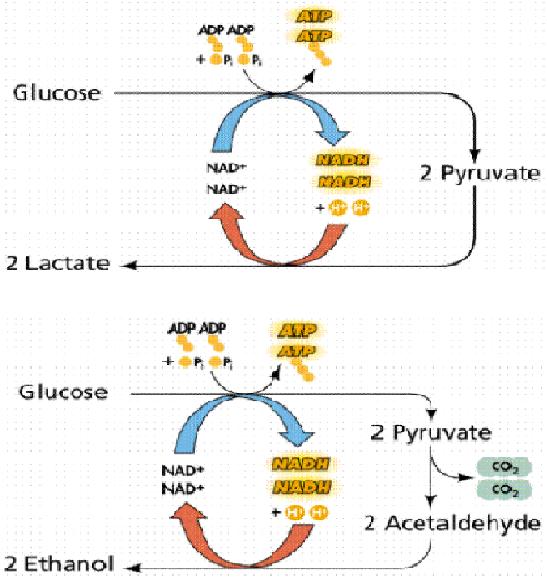Team:UNIPV-Pavia/Project/Motivation
From 2009.igem.org

|
|
|
Motivation |
||||
|
WHY WHEY?Whey is a component of milk, which separates after curdling when rennet or an edible acidic substance are added. It represents one of the main by-products of the cheese and casein industry. It is a mixture of different substances, some of which potentially valuable if extracted and individually processed. As reported in the following table, the main solid components of whey are soluble proteins, lactose, mineral salts and vitamins. In this section a summary of "Ethanol? Whey not!" project results is reported. For more information you can visit Parts Characterization section, in which you can find a documentation for each every single BioBrick involved in this project. This liquid waste is commonly regarded as the "environmental problem" of the cheese factories, which generally produce wheys of different content depending on the specific productive process and kind of cheese. In Italy, as in other countries with an important casearian tradition, the amount of whey produced every year is huge (8-10 million m^3/year). Differently from other countries in the central/nord Europe, in Italy the 85% of the milk produced is transformed in cheese by an high number of small/medium creameries, spread on the whole territory. Until some year ago, whey was given to pigs or introduced directly into the river systems, thus contributing to the organic pollution of environment and giving rise to water asphyxia. Its high nutrient load, in fact, causes the proliferation of microorganisms which deplete oxygen levels in the surface water systems. For this reason, the Italian law classifies whey as "special waste". Two indicators are commonly used to measure the nutrient load: B.O.D.5 and C.O.D..
B.O.D. 5 (Biochemical Oxigen Domand 5) It is an index to measure the oxygen need within 5 days (in mg/l), for the oxidation processes of the organic substances present in waste performed by microorganisms. C.O.D. (Chemical Oxygen Demand) It is a measure of the amount of oxygen used to oxidize organic and inorganic compounds contained in a water sample. It provides a global measurement of all chemicals in the water that can be oxidized and so it is an indirect index of pollutants in a water sample.
Nowadays, it is well known that the management of the whey disposal is expensive and that whey is considered as a troublesome reject substance.
FermentationFermentation is an anaerobic biochemical process, in which an organic compound is reduced to ethanol or lactic acid (typically) as final products in order to produce NAD+, a coenzyme involved in the standard energy-producing pathway, that is glicolysis. Fermentation is wide-spread in living beings: it is the only energy production mechanism coupled to glicolysis in prokaryotes and is also present in eukaryotes were it is an alternative to the more efficient oxidative phosphorilation. The starting compound in the fermentation pathway is pyruvate, which is usually produced from sugar substrates, such as glucose and lactose through the glicolysis pathway. In lactic fermentation, pyruvate is directly transformed in lactate by the enzyme Lactate Dehydrogenase. In alcoholic fermentation, pyruvate is first transformed in acetaldehyde by pyruvate decarboxylase, with the production of a carbon dioxide molecule and then in ethanol by the enzyme alcohol dehydrogenase. From a molecule of glucose, 2 molecules of ATP, the "molecular unit" of energy inside the cells, are produced. Fermentation is exploited industrially in a wide range of preparations: bread and wine-making, beer brewing, cheese and yogurt production. Lactose transformation into ethanol is a process that involves both glycolisis and alcoholic fermentation. Since glicolysis starting point is a molecule of glucose, lactose molecules have to be firstly broken into the two monosaccharide units, glucose and β-galactose. The latter sugar is then converted into glucose by the action of three different enzymes, known as the Leloir pathway. The two molecules of glucose are then oxidized in the glicolysis pathway, in which we have the production of a total of 4 ATP molecules and 4 molecules of pyruvate per lactose molecule. The pyruvate is then reduced into ethanol and carbon dioxide with a 1:1 stochiometry. EthanolMolecular formula C2H6O
Ethanol is an alcohol that is a colorless liquid at ambient temperature, extremely flammable and volatile. It is used for several purposes. For example it is present: - in food, after alcoholic fermentation (e.g. in spirits, wines and beers); - in biofuel generally mixed to the common gasoline (e.g. the Brazil is the country where bioethanol is mainly used; Sweden is the European country where the market for bioethanol is mostly developing); - in manufacture of perfumes, in cosmetics; - in disinfectant, both for home use and professional one. In this project, our attention will be focused to ethanol as one of the most important renewable fuels (biofuels). The possibility of obtaining a renewable source of energy is one of the challenges. Bioethanol as the other biofuels is an environmentally clean source of energy. In the last year, due to the rising environmental concerns and to the petroleum crisis, bioethanol has become a viable and realistic alternative in the energy market. The development of cost-effective technologies for fuel ethanol production is a priority that implies the selection of the most appropriate feedstock and the selection and definition of a suitable process configuration. Bioethanol can be produced from several raw materials containing fermentable sugars as sugar cane (the most important feedstock utilized in tropical and sub-tropical countries) and beet, from starchy materials (most utilized in North America and Europe), from some polysaccharides and from lignocellulosic biomass (for countries where the cultivation of energy crops is difficult). However, production costs of fuel ethanol are higher than production costs of gasoline; diverse process improvements could succeed in lowering ethanol cost. An important part of the research on fuel ethanol production is oriented to the reduction of feedstock costs: the technology of recombinant DNA will provide important advances for the development of fuel ethanol industry. A viable alternative to obtaining fuel ethanol is whey, that it is considered a feedstock for fermentation; in fact, fuel ethanol production from whey seems to be technically and economically feasible. The whey-to-ethanol plant commissioned in 1978 by Carbery Milk Products Ltd., Ireland, is believed to be the first modern commercial operation to produce alcohol. There are two industrial-scale whey-ethanol plants in the United States, at Corona, California, and Melrose, Minnesota, that together produce 8 million gallons of fuel ethanol a year. New Zealand started using fuel ethanol produced from whey in August 2007. All ethanol production processes share some basic principles and steps: - whey permeate from protein ultrafiltration is concentrated by reverse osmosis to attain high lactose content; - lactose is fermented with some yeast strains; - once the fermentation is completed, the liquid is separated and moved to the distillation process to extract ethanol; - ethanol is then sent through the rectifier for dehydration and then denatured. - the effluent may be discharged to a treatment system, digested for methane gas, sold as feed, or further processed into food, feed or other products. Whey permeate used in ethanol fermentation is a free feedstock (no cost) and the capital can be completely invested in the plant construction project. Naturally occurring biological systems cannot efficiently metabolize lactose and ferment it to ethanol: many bacteria (like Escherichia coli) can efficiently metabolize lactose to lactic acid without a significant ethanol production, while many yeasts (like Saccharomyces cerevisiae) and some bacteria (like Zymomonas mobilis) can efficiently produce ethanol from fermentation, but cannot cleave the lactose in the medium. A limited number of organisms (like some species of Saccharomyces and Kluyveromyces, as well as some fungi) can perform both tasks and are used in industrial plants, like the New Zealand one. Anyway, genetically engineered organisms can be implemented to try to reach a higher yield of lactose-ethanol conversion than in wild type strains. |
 "
"





